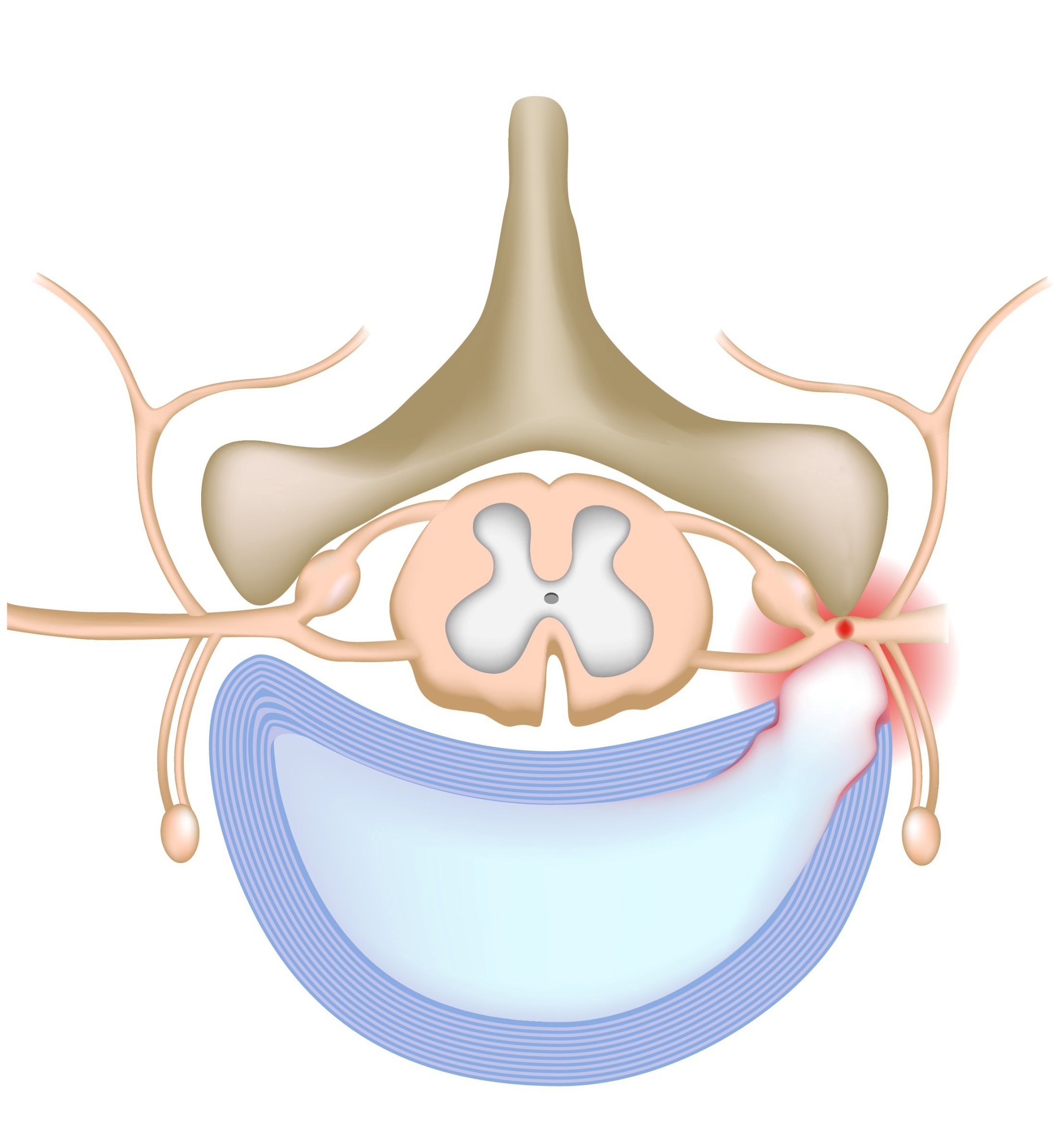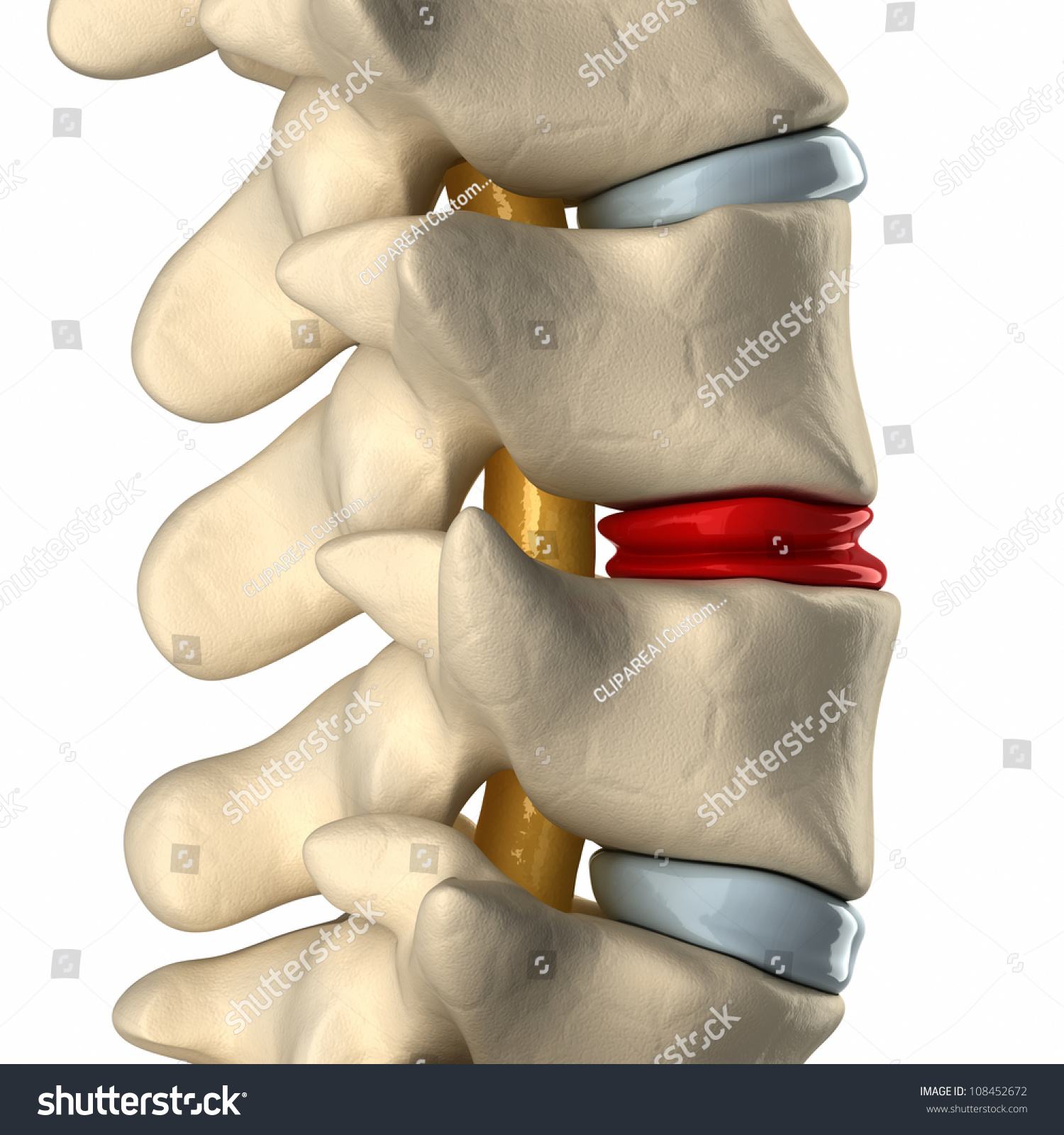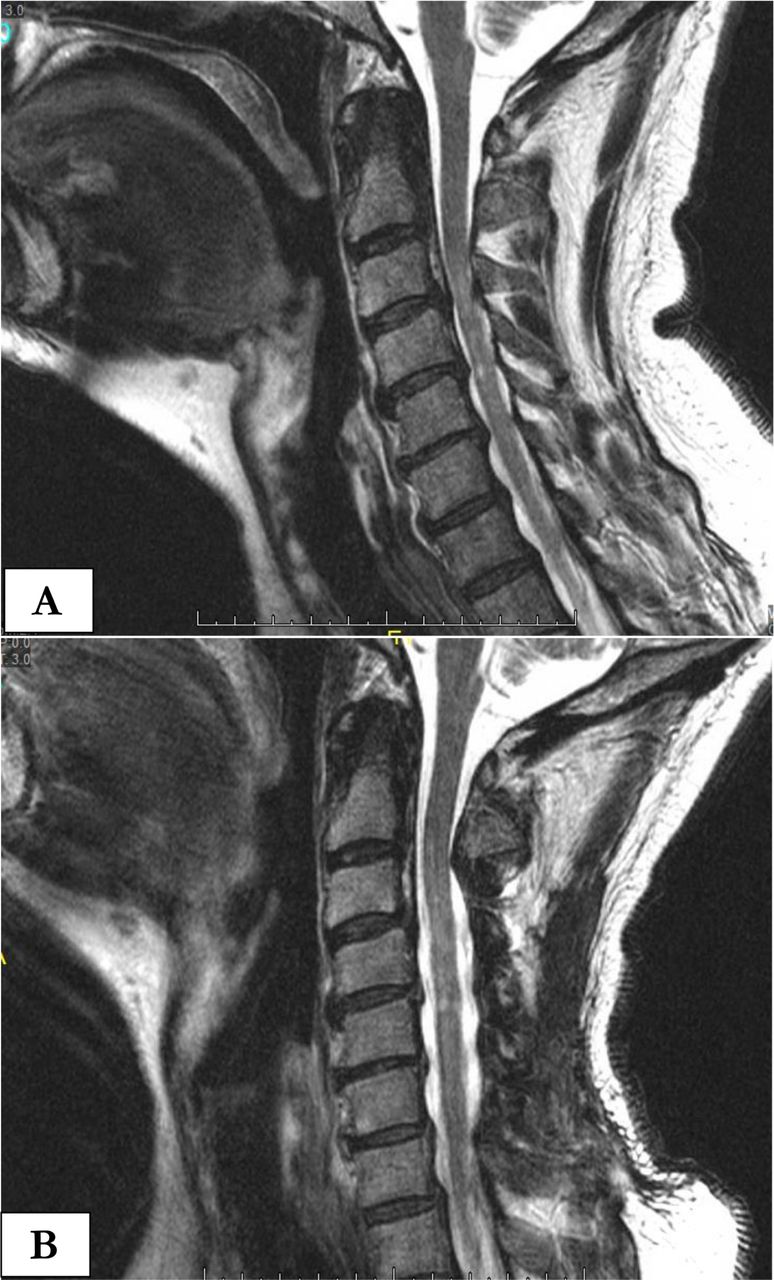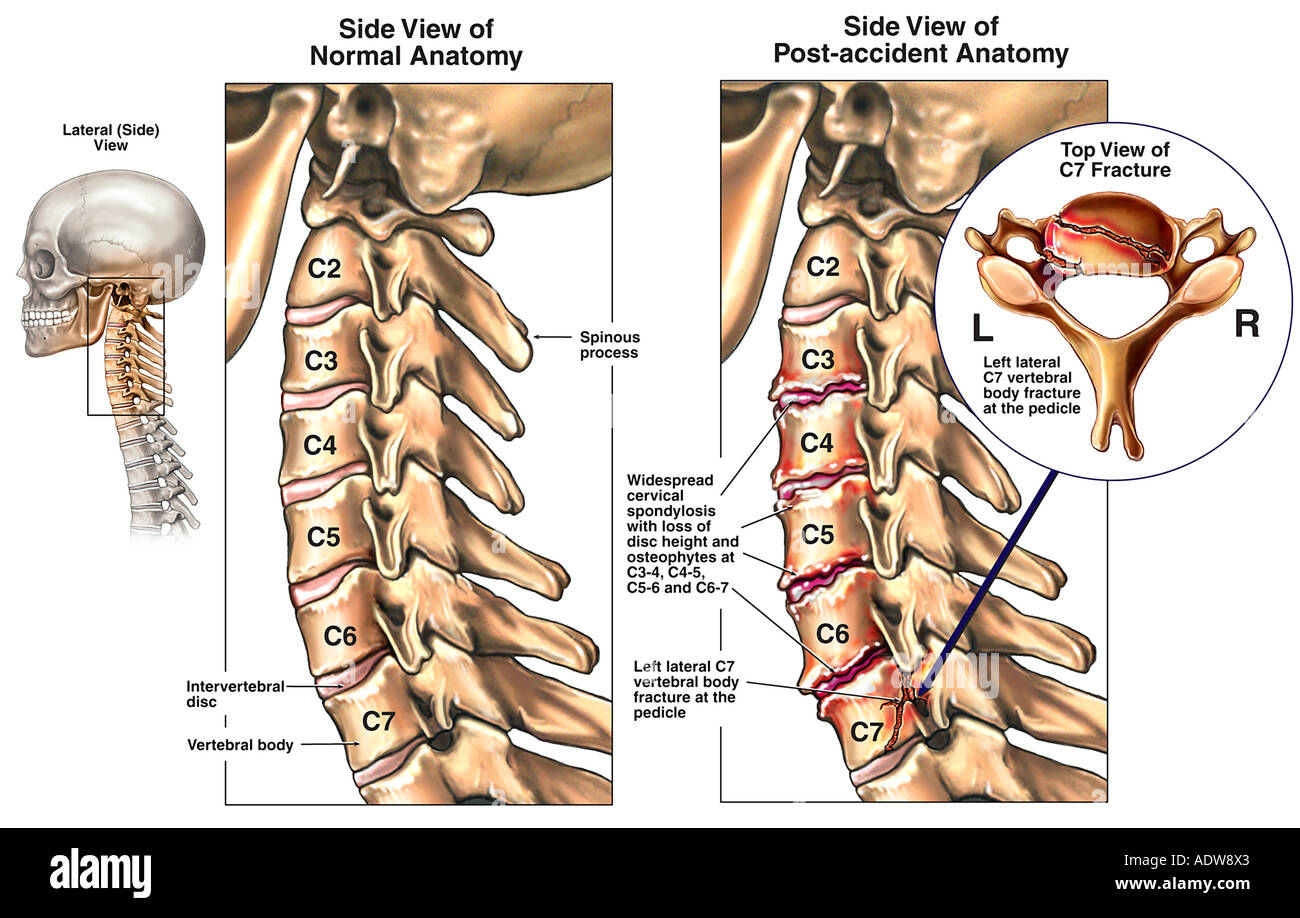
Disc Osteophyte Complex Causes, Symptoms & Treatment Bonati
A total 109 patients of the lumbar disc degeneration with age group between 17 to 80 y were diagnosed & studied on 1.5 Tesla Magnetic Resonance Imaging machine. MRI findings like lumbar lordosis, Schmorl's nodes, decreased disc height, disc annular tear, disc herniation, disc bulge, disc protrusion and disc extrusion were observed.

Disc Degenerated By Osteophyte Formation Stock Photo 108452672 Shutterstock
Overview Cervical spondylosis is a general term for age-related wear and tear affecting the spinal disks in your neck. As the disks dehydrate and shrink, signs of osteoarthritis develop, including bony projections along the edges of bones (bone spurs). Cervical spondylosis is very common and worsens with age.

Regression of DiscOsteophyte Complexes Following Laminoplasty Versus Laminectomy with Fusion
Bone spurs (osteophytes) often form where bones meet each other — in your joints. They can also form on the bones of your spine. The main cause of bone spurs is the joint damage associated with osteoarthritis. Most bone spurs cause no symptoms and can go undetected for years. They might not require treatment.

Post accident Condition with Spondylosis Osteophytes and Fracture of Stock Photo 7712674 Alamy
Disc osteophyte complex is a spinal ailment caused due to the formation of osteophytes in the spine affecting the intervertebral disc. Osteophytes (also called bone spurs) are the bony outgrowths that can develop as a result of your body's natural reaction to any damage or irritation caused to the bones or ligaments in the spine.

Degenerative Disease of the Spine Neuroimaging Clinics
Disc osteophyte complex is a term sometimes used by medical professionals when spinal disc problems and osteophytes, also called bone spurs, are both present in the spinal column, especially the upper region. These issues commonly develop as a result of the natural deterioration of the spine as we age.

osteophytes Archives Orthogate Press
Bone spurs (osteophytes) can also cause this condition. The natural structure of your spine. The spinal canal is the space inside your spine that holds your spinal cord. It naturally gets narrower farther down your back. That's part of why lumbar foraminal stenosis is the most common type. Anatomy differences. Some people have a spinal.

Lumbar disc showing degenerated by osteophyte formation
Therefore, the height, width, and depth of the disc-osteophyte complex measured by imaging accurately reflected its size and compression degree, providing a vital reference for the surgery. Although the disc-osteophyte complex sizes in this study were different, most were within 10.5 mm in width and 10.6 mm in height, based on imaging.

Pin on I'm a RT
Disc osteophyte complex is the development of osteophytes (bone spurs) affecting more than one intervertebral disk or spinal vertebrae. Osteophytes or bone spurs develop in the musculoskeletal system due to normal wear and tear as you age.

Spondylosis deformans. (A) Lateral radiograph shows “clawlike” osteophytes (arrows) at the L4/5
Disc osteophyte complex (also known as disc osteophyte bar) is a term used on MRI of the cervical spine to denote the presence of disc protrusion and/or marginal endplate osteophytes resulting in narrowing of the cervical canal.

Illustration of discosteophyte complex size measurement. Download Scientific Diagram
Dysphagia In rare cases, individuals can experience progressive difficulty swallowing or breathing. Such symptoms as those described above are similar or the same as those that can be caused by a number of other neurological and/or spinal conditions.

Abnormal Hardening Of Bone mapasgmaes
Disc osteophyte complex (DOC) refers to disc material that extends beyond the contour of the vertebral body but is covered partly or completely by vertebral body osteophytes. This is a common finding in older patients. The mass effect caused by a DOC cannot be relieved by surgical excision of disc material, and for that reason, it is useful to.

Pin on MRI
What is a Disc Osteophyte Complex? By A. Mendelson, MD October 9, 2023 Please read the disclaimer Back pain can be a perplexing issue, often caused by underlying factors like the Disc Osteophyte Complex. This condition not only brings discomfort but also leaves a distinctive mark on imaging.

Osteophyte Formación Degeneración De Disco Problema De La Columna Vertebral Foto de stock y más
Symptoms and Causes What causes bone spurs? Joint damage from OA is the biggest cause of bone spurs. OA is a breakdown of cartilage — the firm, flexible tissue that cushions bones and allows joints to move more easily. OA develops as we age or after damage (like a sports injury).

What is a Disc Osteophyte Complex YouTube
The term Disc Osteophyte Complex is given to a pathological condition where multiple spinal vertebrae intervertebral discs get affected by formation of Bone Spurs or Osteophytes.

Disc Osteophyte Complex Causes, Symptoms & Treatment Bonati
The term "disc-osteophyte complex" generally refers to abnormal extension of intervertebral disc material that accompanies immediately adjacent osteophyte formation at the vertebral body margin (see the below figure).

Osteophyte Formation in Cervical SpineSymptomsTreatmentDiagnosis
Disc osteophyte complex should not be used in the lumbar spine. The pathophysiology is different, so stick to using the standard nomenclature of bulge, osteophyte, and disc herniation. DOC should not be used to the exclusion of the terms "osteophyte" and "disc herniation" (protrusion, extrusion) when they are obvious in the cervical spine.